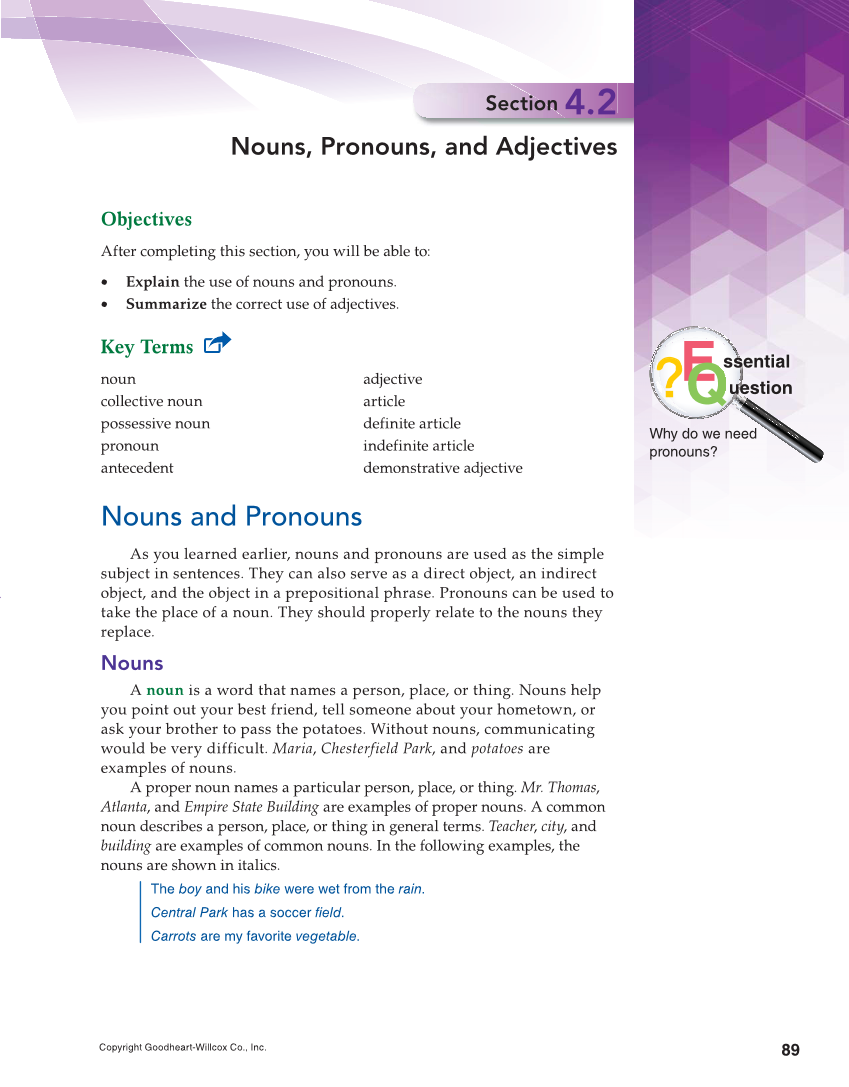89 Copyright Goodheart-Willcox Co., Inc. E Q ssential uestion Why do we need pronouns? Section 4.2 Nouns, Pronouns, and Adjectives Objectives After completing this section, you will be able to: • Explain the use of nouns and pronouns. • Summarize the correct use of adjectives. Key Terms noun collective noun possessive noun pronoun antecedent adjective article definite article indefinite article demonstrative adjective Nouns and Pronouns As you learned earlier, nouns and pronouns are used as the simple subject in sentences. They can also serve as a direct object, an indirect object, and the object in a prepositional phrase. Pronouns can be used to take the place of a noun. They should properly relate to the nouns they replace. Nouns A noun is a word that names a person, place, or thing. Nouns help you point out your best friend, tell someone about your hometown, or ask your brother to pass the potatoes. Without nouns, communicating would be very difficult. Maria, Chesterfield Park, and potatoes are examples of nouns. A proper noun names a particular person, place, or thing. Mr. Thomas, Atlanta, and Empire State Building are examples of proper nouns. A common noun describes a person, place, or thing in general terms. Teacher, city, and building are examples of common nouns. In the following examples, the nouns are shown in italics. The boy and his bike were wet from the rain. Central Park has a soccer field. Carrots are my favorite vegetable.
